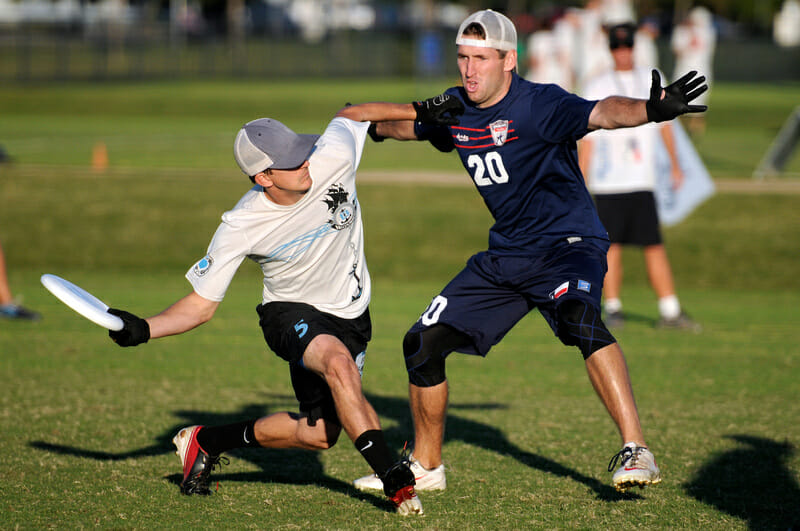
This semester, I joined the women's club frisbee team here at Colgate. And originally I couldn't throw the forehand throw (also called a flick) at all. I'm honestly still not great at it, but I was curious to see how physics tied into the throw. So first things first, there are two main forces that act on a frisbee while it's in flight: drag and lift. Neither of these forces were discussed in a lot of depth in class, but these forces can be modeled by rotational motion and fluid dynamics, which we did go over. So let's start with some important equations:
Bernoulli's Equation:
P1 + 1/2ρv1^2 + ρgh1 = P2 + 1/2ρv2^2 + ρgh2
P= pressure
ρ= density of fluid
v= velocity
g= gravity
h= height
Angular momentum:
L= Iω
I= moment of inertia
ω= angular velocity
With these equations in mind, we can start to analyze a frisbee throw. To start, a frisbee is a disk and in order for it to travel anywhere, it must have some rotational motion. This is because of angular momentum as it helps to stabilize the frisbee while in the air. Because angular momentum is conserved (unless torque is applied to it), a frisbee will continue its rotational path going the same speed it started with. Also, because the frisbee travels with a linear velocity, the frisbee will remain on a relatively straight path if thrown flat. However, as I can attest to, if you tilt the frisbee and it is released at an angle in a certain direction, it will quickly move to that direction and hit the ground. Now this gets into Bernoulli's equation as air pressure greatly affects the frisbee's path. In this case, air is our fluid in question. So with a faster traveling fluid, pressure decreases as shown by the relationship in Bernoulli's equation. This occurs on the top of the frisbee when thrown because air can more quickly travel over the smoothed side of the disk than below it. This change in pressure causes the frisbee to move upwards, rather than down into the ground. This is because of the equation pressure= force/area. The area of the frisbee remains the same, but as the pressure decreases, force must also decrease. So because the pressure on the top of the frisbee is lower, the force pushing down on the frisbee is also lower than the force pushing upwards. Therefore, the force up will cause the frisbee to lift up. So, basically, in order to get a frisbee up in the air, all you have to do is give it a rotational velocity and make sure it is pretty parallel to the ground. If the frisbee is angled, it will follow an unpredictable path that will most likely never go where you want it to. There should be a slight upwards angle on the frisbee when thrown initially because there is air that is pushing it down so an upwards takeoff angle will help with the lift. But now, how do you get the frisbee to go far? That is something I've personally struggled with a lot when throwing. And this is because when trying to throw far, we have a tendency to put more force in the linear direction, which will only cause the frisbee to hit the ground harder. Rotational velocity is far more important than linear velocity in the distance a frisbee travels. This is again due to angular momentum. The more stable a frisbee is during flight, the farther it will go. So basically, the more spin you put on the frisbee, the more angular momentum it will have to go a farther distance. So focus on increasing your angular velocity, not linear velocity. The more force you put into the flick of your wrist, the more angular velocity the frisbee will travel with. And that is the key to a long frisbee throw. There are definitely more forces at work on a frisbee than I discussed in this post that we have not talked about but these are some of the basic physics explanations for frisbee flight. Hopefully if you ever decide to throw a frisbee, you'll apply these physics tricks better than I do!
Image from: https://ultiworld.com/2015/07/09/the-forehand-part-four-best-practices/
For a more detailed explanation of the physics behind frisbee, check out this article: http://www.cs.cmu.edu/afs/cs/academic/class/16741-s07/www/sample_projects/spurushw_report.pdf
Image from: https://ultiworld.com/2015/07/09/the-forehand-part-four-best-practices/
For a more detailed explanation of the physics behind frisbee, check out this article: http://www.cs.cmu.edu/afs/cs/academic/class/16741-s07/www/sample_projects/spurushw_report.pdf
No comments:
Post a Comment
Note: Only a member of this blog may post a comment.